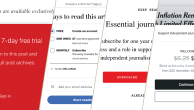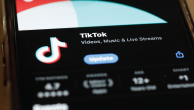Who Advertises on News Sites and How Much Those Ads are Targeted
Between 2011 and 2015, revenue from digital advertising in the United States is expected to grow by 40% and to overtake all other platforms by 2016.[1]
Yet how much of that growth will go to underwrite news remains in doubt and throws into question the financial future of journalism as audience continue to migrate online. What will happen pivots in part on whether the news industry can move into the more lucrative areas of digital advertising, particularly using consumer data to target ads, persuading major legacy advertisers to also advertise online and moving into new revenue areas.
A new study of advertising in news by the Pew Research Center’s Project for Excellence in Journalism finds that, currently, even the top news websites in the country have had little success getting advertisers from traditional platforms to move online. The digital advertising they do get appears to be standard ads that are available across many websites. And with only a handful of exceptions, the ads on news sites tend not to be targeted based on the interests of users, the strategy that many experts consider key to the future of digital revenue.
Of the 22 news operations studied for this report, only three showed significant levels of targeting. A follow-up evaluation six months later found that two more sites had shown some movement in this direction, but only some, from virtually no targeting to a limited amount on inside pages. By contrast, highly targeted advertising is already a key component of the business model of operations such as Google and Facebook.
These are some of the findings of the study, which analyzed the advertising in 22 different news operations and 5,381 ads representing a cross section of media. Researchers compared website ads to the advertising in legacy platforms. They also measured the level of ad customization online by having different researchers visit the sites at the same time. In addition, the report also contains a companion report by Professor Joseph Turow of the University of Pennsylvania’s Annenberg School for Communication that offers a primer on digital advertising.
Overall, the analysis finds that while news organizations have tried to persuade their advertisers to buy space across multiple platforms, there was little evidence that they had succeeded. The kinds of products and services being advertised online were quite different than in legacy platforms, and often were seen across multiple websites. On CNN cable television, for instance, the top three advertising categories were motion pictures and television, insurance, and telecommunications companies; on CNN.com they were financial ads, toiletries and cosmetics, and job search.
Professor Turow notes that the absence of legacy advertisers from the Web domains may reflect a problem. “Figuring out what they are doing instead, and why, might be a first step in trying to get some of them back.”
Among the findings:
- In-House ads, ads selling or promoting a news organizations own products, fill more space across these news websites than any other advertising category. Nearly a quarter, 21%, of all the ads captured were for the news organization’s own products. The practice occurs most among the media sectors with direct subscription sales-newspapers and magazines. At time.com, for example, ads promoting their own products accounted for 56% of the ads captured in the study. This practice was less common at sectors with no direct consumer subscription, such as those from network television and cable television[2].
- The finance industry is represented far more than any other on the news websites studied. Ads from the financial industry numbered nearly three-times that of the next biggest category, toiletries and cosmetics. What stood out even more was that the financial industry’s strong presence on news Web domains is matched by a fairly limited presence in the legacy platforms. Every sector except magazines experienced a greater portion of financial advertising on the website than in the legacy platform. On abcnews.com these ads made up fully 45% versus 13% in the morning and evening broadcasts studied.
- Discount or coupon advertising such as Groupon was fairly limited. Just as the long-term viability of discount companies has come into question, their prevalence on news websites in limited as well. The year 2011 saw the rise of discount/coupon companies like Groupon or Living Social, which many news organizations hoped might become a major new revenue source. The study found that such coupons were not a major presence among these 22 news sites. Discount ads, where discounters like Groupon pay the news organization to carry their ad, made up more than 10% of the ads on only five sites. Of the three that used it the most, two (the Toledo Blade and the LA Times) did so through their own discount programs. Yahoo News was the other news site to rely heavily on this type of advertising, largely through Groupon.
- Most of the news sites did not feature ads targeted to consumers based on their online behavior. Just three of the 22-CNN, the New York Times and Yahoo News-employed high levels of targeting, delivering different ads to the researchers based on that person’s recent online activity. A handful of other sites had some limited targeting, mostly in the form of smaller ads on internal news pages. For sites that do target their ads, the practice of erasing one’s browser history, or “cookies,” had virtually no effect. The same level of targeting occurred.
- News organizations tend to rely most heavily on static banner ads. Rich media ads that make use of techniques like popping up in the screen or animating the content in the ad are rare on news sites. So too are video ads, one of the fastest growing types of ads on the Web. EMarketer predicts video advertisings will increase 43% in 2012 while static banner will grow just 18% and is expected to level off as consumers are drawn to newer, more eye-catching formats. Yet static banner ads remain the style most prevalent on these key news sites. [3]
- Even though search ads don’t appear on most news sites, Google’s advertising presence is still strong there. A popular style of ad on these sites, accounting for 38% of all ads captured, is the sponsored link box-small boxed-in ads that usually have between three and seven lines of text. On most sites this box is powered by Google.
The study examined advertisements on the homepage and key inside landing pages (from the top five stories on homepage) for a cross section of 22 different news operations. Researchers analyzed 5,381 ads. They examined the industry placing the ad, the style of ad and the relevant importance of discount programs. The study also had different researchers visit the same news websites at the same time to test whether one researcher received a different mix of ads from another. The outlets studied included 11 newspapers, four magazines, the three cable news outlets, the three commercial network broadcasts and two online-only outlets, Yahoo News and The Huffington Post.[4] On the legacy platforms, ads were pulled from the front section of the newspaper, the afternoon and evening cable news programs, the morning and evening network news programs and one full issue of each magazine. Ads for newspapers and television were captured between June 10 and June 15, 2011. Ads from magazines were captured from the July 7 issue of each magazine. The corresponding websites were coded on the same day as the traditional outlet. For example, if the CNN television shows coded aired on June 10, then CNN.com was captured on the same date. On Jan. 27, 2012, PEJ researchers revisited each site to test for any new evidence of targeting. The level of targeting was consistent with PEJ’s earlier findings. Two sites, however, did show more targeting than in the earlier study: theatlantic.com and latimes.com. In January, research showed that roughly 10% more of the ads were different between two users than in the earlier research in 2011 – moving them from having virtually no targeting to mid-level on the inside pages.
Footnotes
[1] eMarketer, October 2011 and Forrester Research September 2011
[2] Users/Viewers of cable news do pay for their cable subscription through their cable bill, but they have no choice to pay for a specific channel or not. A consumer does not have the choice to pay for MSNBC but not for Fox News. In contrast they do have a choice to pay for the New York Times, or not to pay for it.
[3] None of the sites studied produced video stories as one of the top five on the days studied. Therefore, there were no actual pre-roll video ads (those embedded inside video stories). Instead, the video ads that appeared were stand alone. Since the study, Yahoo News created a content partnership with ABC News which included plans to feature more video amid Yahoo News’ top news stories.
[4] The study covers the three network TV broadcasts but only two of the corresponding sites because NBC Nightly News and MSNBC Today Show are both under msnbc.com.




